Is Zermatt Worth Visiting? What You Need To Know Now
Visiting Zermatt promises breathtaking scenery and unforgettable experiences—but is it truly worth the trip?
Zermatt is the little Swiss town that’s got everybody buzzing. I know what you’re thinking: “Is Zermatt worth visiting, or is it just another overhyped tourist trap?”
In this article, we’ll unveil the unique and extraordinary experiences that make Zermatt a magnificent travel destination, regardless of your travel style or the season.

Discover Zermatt contains affiliate links, if you make a purchase using one of these links, we may receive compensation at no extra cost to you. Read our disclaimer for more information.
Is Zermatt Worth Visiting?
Yes! Zermatt is worth visiting at any time of the year, offering many activities for any outdoor enthusiast or sightseeing traveller, ensuring an adventure-packed trip no matter when you plan your visit.
If you love mountains or snowsports, Zermatt is a 365-day destination. It is also home to several Michelin-starred restaurants and a great selection of spas.
No matter what type of traveller you are, from adventure to luxury, Zermatt is an excellent destination! It’s a little on the spenny side, especially for budget travellers, but there are always ways to stay within budget, even in Switzerland.
Booking your trip last minute?
Use our favourite travel resources to save time & money:
Best Accommodation Deals
Save on Swiss Train Travel
Affordable Airport Transfers
Excellent Tours & Activities
The best Flight Deals
Save on Car Hire
Don’t forget Travel Insurance
Reasons to Visit Zermatt
Zermatt is not just a destination, it’s an experience. From the iconic Matterhorn to the diverse culinary scene, Zermatt offers a range of unique experiences that make it a must-visit for any traveler.
The Matterhorn

Well, yup, you guessed it. The number one reason people flock to Zermatt is to snap the most photogenic mountain on the planet.
Also known as The Horn, Hörnli, Mont Cervin, and Cervino, the Matterhorn sits at 4’478 m on the border of Switzerland and Italy. It is famed for appearing at Disneyland Park and on iconic Toblerone wrappers.
No joke, The Matterhorn is the most photographed mountain in the world, and it’s easy to see why. It certainly had us at hello.
Year Round Snow Sports

Beginners and pros can enjoy skiing and snowboarding 365 days of the year. Park riders can access a summer or winter snowpark 300 days a year.
During the winter, there are 360km of pistes and countless mountain restaurants to explore. In summer, skiing is available at the highest skiable area in the Alps, at 3’883 m. Discover your first snow experience, hit the jumps, chill at Shred Coffee, or have lunch at Testa Grigia.
Our complete guide to:
Skiing & Snowboarding in Zermatt
It’s Foodie Heaven


From quick Swiss snacks to Michelin-starred restaurants, Zermatt is not short of incredible places to grab a bite or take a culinary journey, and that’s before you hop over the border to Italy.
Experience Swiss dishes as numerous bakeries and traditional restaurants offer bündner nusstorte and cheese fondue.
Here’s our guide to:
The Best Restaurants in Zermatt
Trails for Days
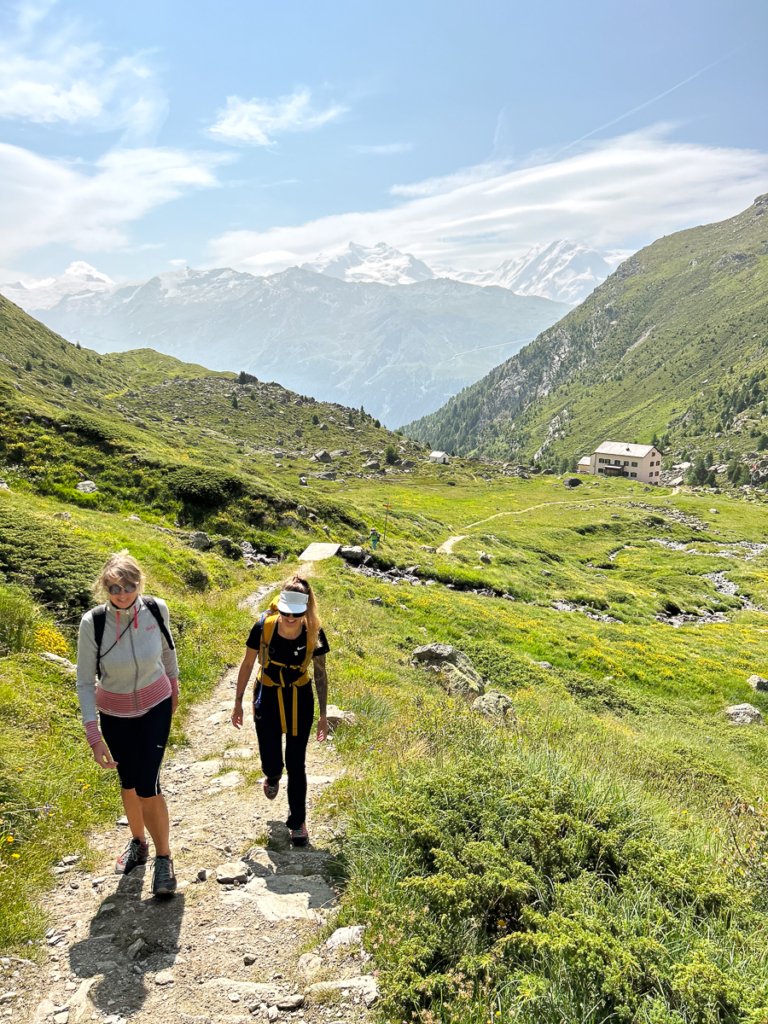
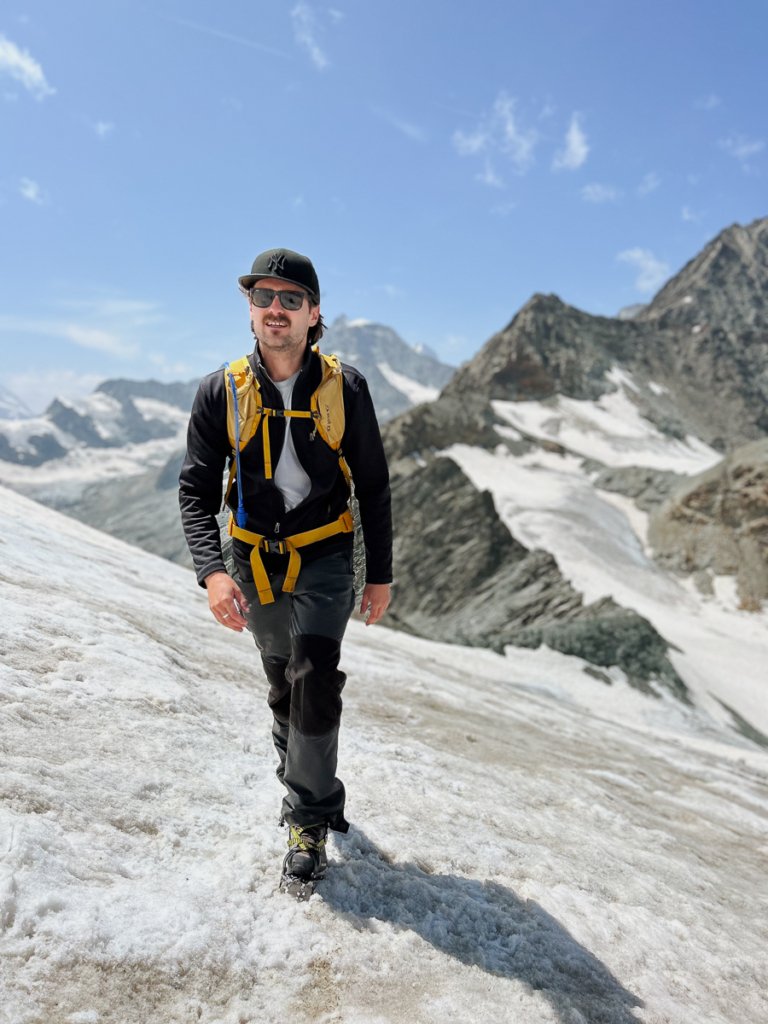
No matter the season, there are hiking trails for all abilities. From gentle snowshoe trails to summiting 4’000 m peaks, if you’re hoping for a good stomp, Zermatt is the place to get your steps in.
In summer, there are many educational, wildlife-spotting, and family-friendly trails and moderate to challenging hikes.
A Fairytale Village
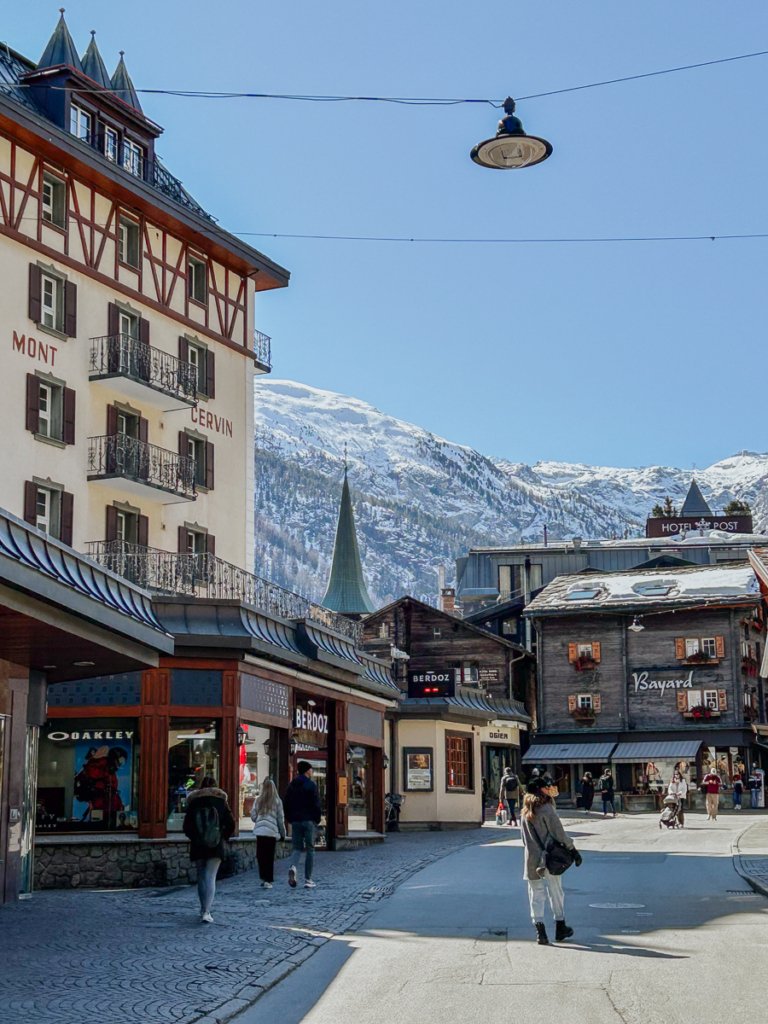
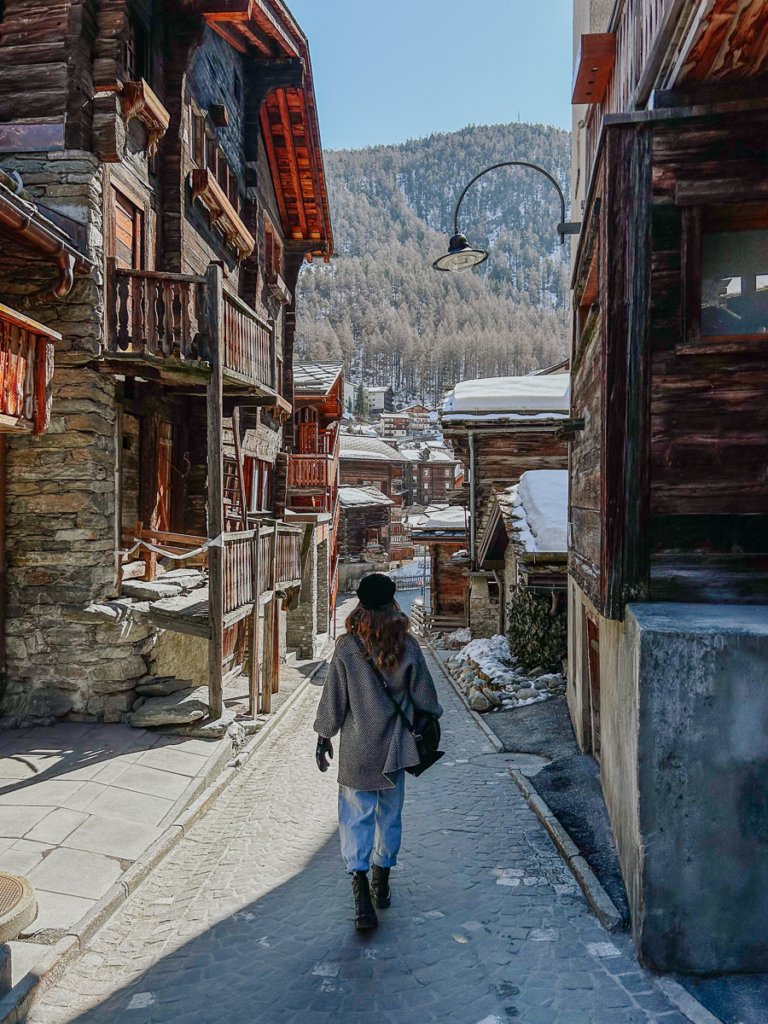
Winter visitors might just feel like they’ve been trapped in a Krampus snowglobe–although, one we don’t wish to escape from. Meanwhile, the summer crowds bask in a postcard-perfect image.
Rustic wooden chalets, a fresh, thick icing of snow or blooming summertime flowers make Zermatt one of the most idyllic mountain settings in the world.
Car-Free Fresh Alpine Air
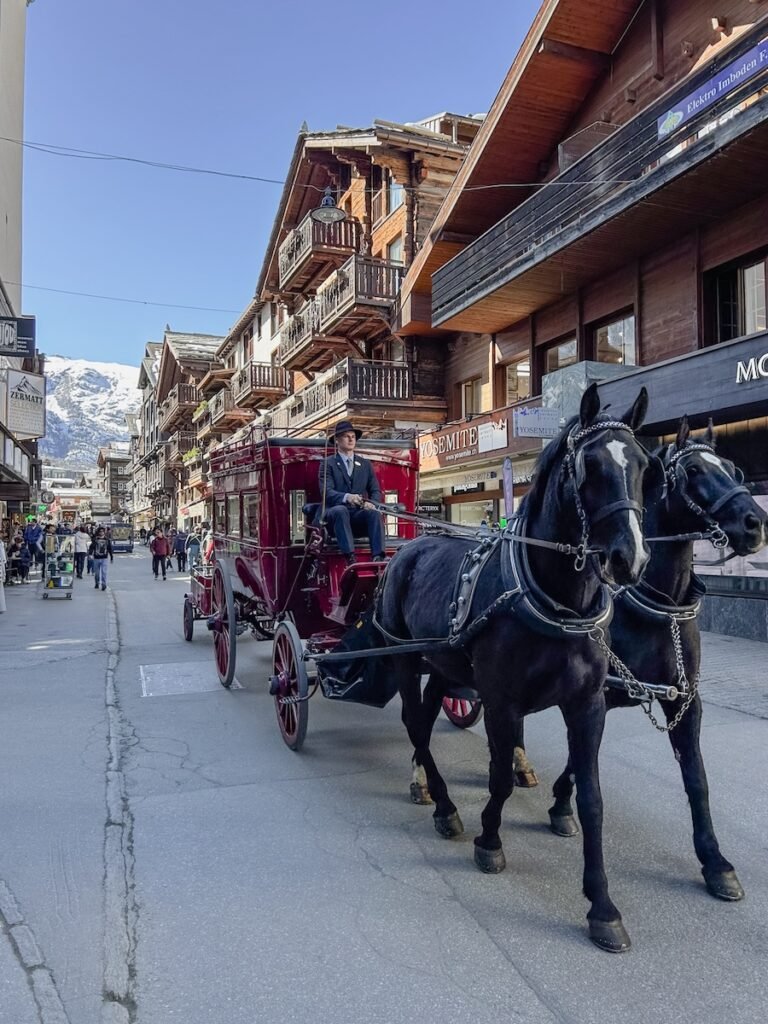

Breathe it in! In addition to adding to the utter adorableness of this fairytale village, electric-only vehicles in Zermatt mean clean, fresh mountain air. Go on, let it sting your nostrils and tickle your brain; you’ll get used to it after a few hours.
Two Countries in One Trip
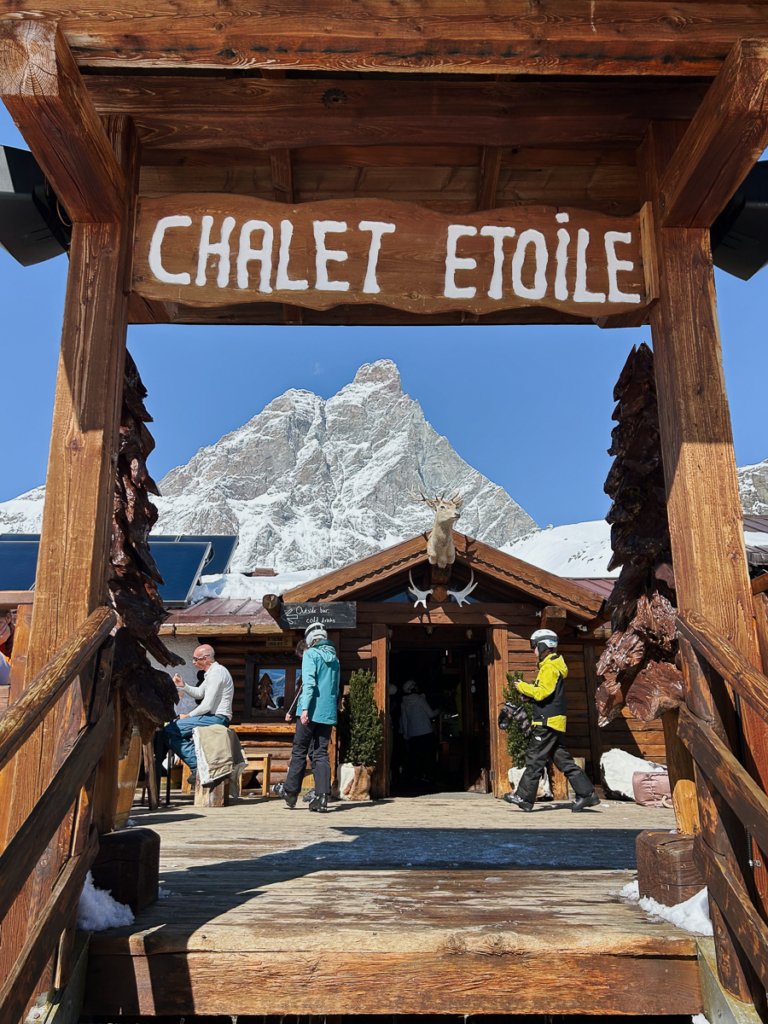

It has never been easier to access Italy during your visit to Zermatt. With the new Alpine Crossing, you can take the highest cable car in the Alps into the town of Cervinia. Skiers and snowboarders can ski over in winter with an international ski pass.
Breakfast in Switzerland, lunch in Italy, anyone?
Things to Do in Zermatt
The Must-Visit Spots include Matterhorn Glacier Paradise, Gornergrat Railway, Gorner Glacier and exploring the Sunnegga region.
Hikers can hit the many trails, snow sports lovers should navigate our network of pistes, while foodies indulge in our culinary offerings.
Zermatt is also an incredible destination for shopping, après ski, live music, nightlife, seasonal events and wellness retreats.
For a deep dive into these activities and more, take a look at:
Is Matterhorn Glacier Paradise Worth It?

We get it—it’s not the most affordable experience. While access is a bit pricey, the panoramic views of fourteen glaciers and thirty-eight 4000 m peaks across the Swiss, Italian, and French Alps are worth it.
Plus, there aren’t too many other places you can explore inside a glacier.
If you’re a mountain nerd like us, you’ll love Matterhorn Glacier Paradise. If you’re not too fussed about views like this, maybe consider saving the pennies for another Zermatt experience that is more suited to your style.
How Many Days Should I Spend In Zermatt?
You should spend 3-4 days in Zermatt to get a good feel for the place. This gives you enough time to visit the iconic peaks, take a famous cable car ride, and maybe even squeeze in a hike or ski or two.
We recommend spending at least a week exploring Zermatt. There is so much to do in this tiny village; you’ll want to take as much time as possible to experience it all.
From hikes and sights in the summer to snowsports and fine dining in the winter, Zermatt is a destination you should thoroughly experience.
Is a Day Trip to Zermatt Worth it?
If you’re short on time, a day trip to Zermatt is worth it. You can still see the Matterhorn (weather permitting), ride a cable car or cogwheel train, get up close to a glacier, hike/ski and have a fantastic meal in one day.
For a more complete guide, head to:
How Many Days in Zermatt? 1 to 4 Days Itinerary Planning
Is it Worth Going to Zermatt if You Don’t Ski?

It is worth going to Zermatt if you don’t ski. Even in the winter, when the summer hiking trails close, there are still so many amazing experiences to have in Zermatt. And just because you don’t ski doesn’t mean there aren’t other snow activities you can enjoy.
Many of Zermatt’s most popular activities don’t involve snowsports. There is plenty of sightseeing, tours, wining, dining, paragliding or other adventure activities and relaxing to be had in this fairytale village.
Winter brings an exciting vibe to Zermatt, with a buzzing atmosphere, the towering Matterhorn, twinkling lights and a blanket of snow, the magical feeling is like nowhere else.
Book Your Zermatt Trip For Less
Find dream accommodation, choose from luxury chalets to budget hotels and self-catering apartments.
Get the best flight prices from all worldwide destinations and save tonnes on your next visit to Switzerland.
Plan and book an exciting itinerary with the best adventure and walking tours in Zermatt and other European destinations.
What is So Special About Zermatt, Switzerland?
What’s so special about Zermatt is its unique feel, traditional setting, and abundance of activities at any time of the year. Let’s face it: The Matterhorn is like the George Clooney of mountains; it only gets better with age.
No matter how long you spend in Zermatt, you’ll never tire of looking at that pointy hill.
Is Zermatt Worth Visiting in Spring?
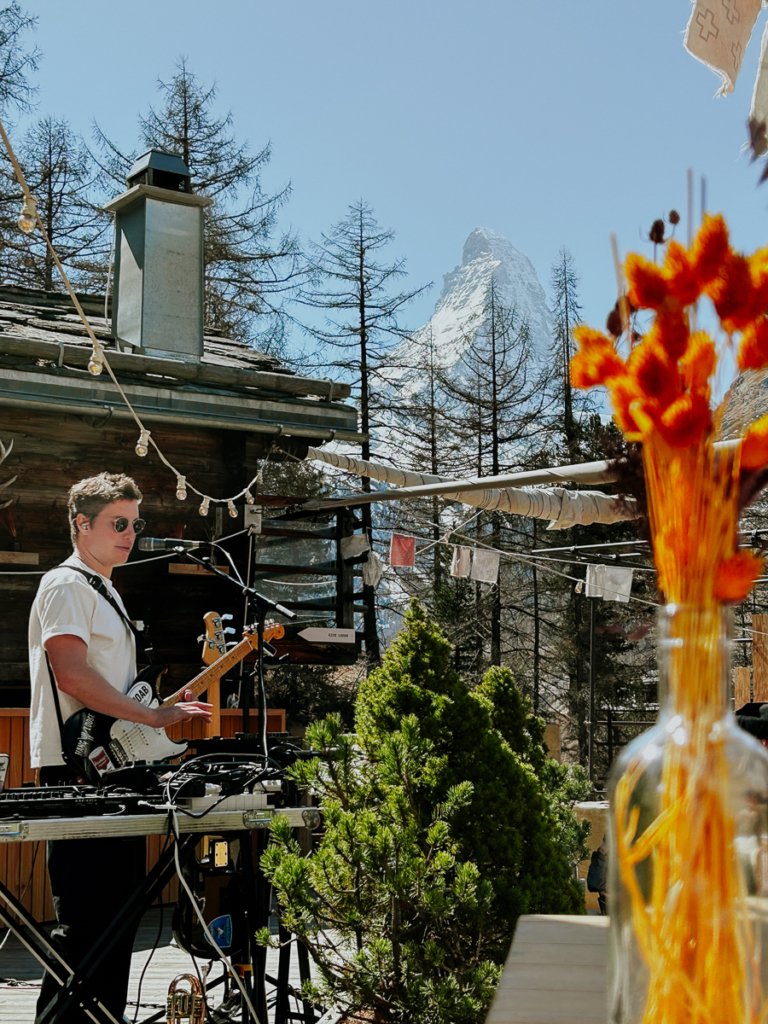

Zermatt is worth visiting in Spring for milder weather and fewer crowds, allowing you to explore peacefully, whether skiing on high-altitude slopes, hiking blooming trails, or taking in the views of the Matterhorn.
When | March to May
Temperature | Spring temperatures in the village gradually rise, starting from -3°C to 5°C (27°F to 41°F) in March and reaching 4°C to 14°C (39°F to 57°F) by May.
Precipitation | Precipitation increases from 60 mm in March to 80 mm in May, transitioning from snow to mostly rain as temperatures climb.
Activities | Enjoy late-season skiing, snowboarding, snowshoeing, spring hiking, rock climbing, paragliding, and scenic railway rides.
Events | Key events include Zermatt Unplugged, an acoustic music festival in April, and the Patrouille des Glaciers, a world-class ski mountaineering race. You will also find fun on slope events like St. Patricks Day at Alphitta, a Waterslide Contest at Adler Hitta, and the Last Waltz at Cervo.
Crowds | Moderate crowds offer a quieter alternative to the busy winter season. Popular events can bring more visitors for short periods.
Prices | Spring offers more affordable accommodation and ski passes than winter. However, Easter and key events may still temporarily drive costs higher.
Tips | Pack layers for variable weather and a waterproof jacket for spring showers. Perfect for staying comfortable during changing conditions.
Here’s a deeper dive:
Is Zermatt Worth Visiting in Summer?

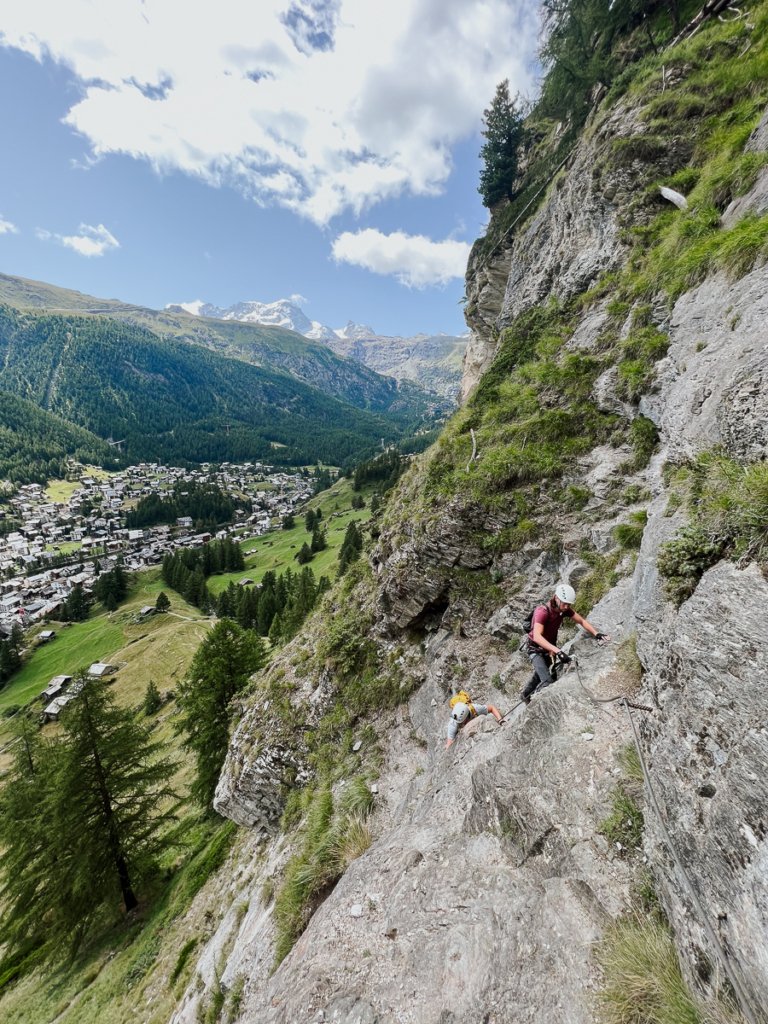
Zermatt is worth visiting in the summer for its hiking trails and scenic beauty. You can also enjoy mountain biking, rock climbing, hut hiking, astrophotography, relaxation, dining, summer skiing, and park riding.
When | June to August
Temperature | Warm days range from 15°C to 25°C (59°F to 77°F), with cooler nights between 5°C and 10°C (41°F to 50°F).
Precipitation | Summer sees 50-70 mm of monthly rainfall, usually brief, intense showers followed by sunny periods. Rain gear is recommended for outdoor activities.
Activities | Popular activities include hiking, mountain biking, glacier skiing, paragliding, rock climbing, and scenic train rides.
Events | Standout events include the Gornergrat Zermatt Marathon in July, Swiss National Day on August 1st, the Folklore Festival celebrating Swiss traditions, and late August’s Matterhorn Ultraks trail running series.
Crowds | Zermatt is vibrant and bustling in summer, packed with visitors exploring the outdoors and attending festivals and events.
Prices | Summer prices are moderately higher than in late spring but lower than the winter peak, especially for lodging.
Tips | Pack layers and sunscreen for changing temperatures and intense mountain sun. A hat and rain gear will keep you prepared for all weather scenarios.
Here’s a deeper dive:
Is Zermatt Worth Visiting in Autumn?
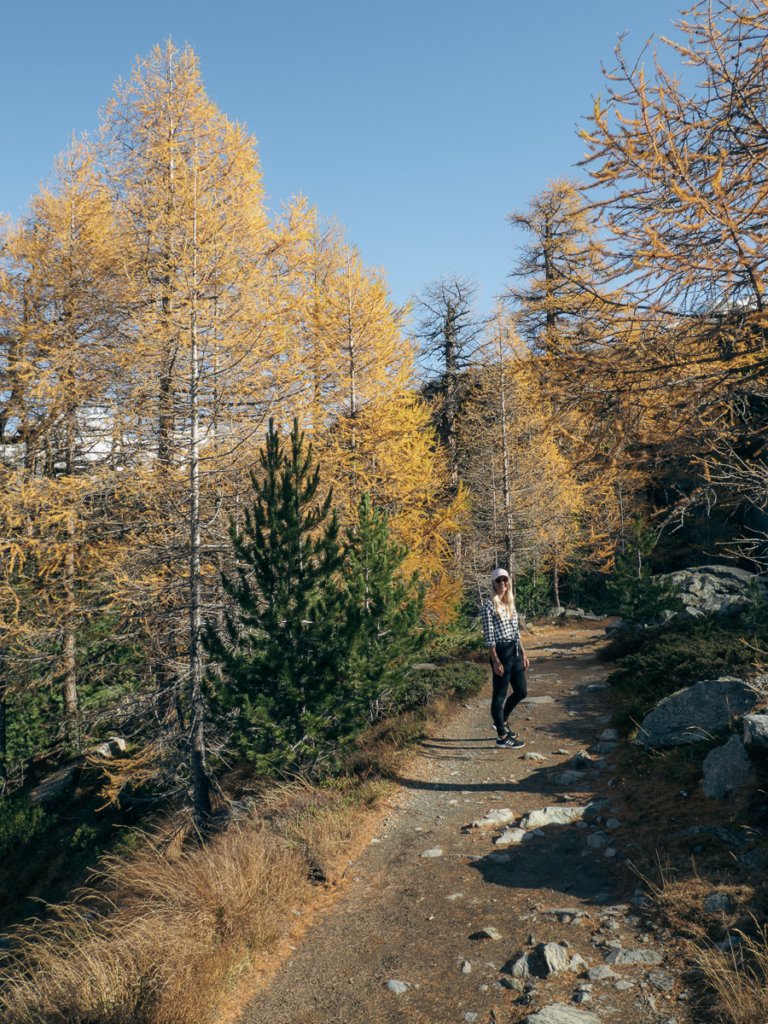
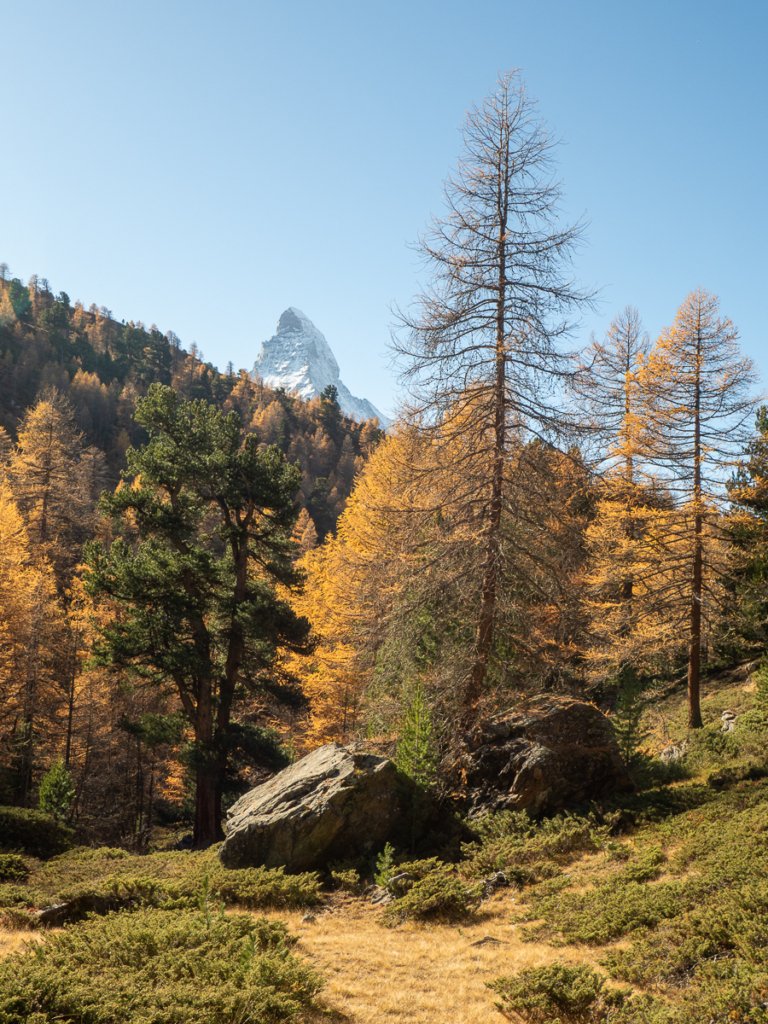
Zermatt is worth visiting in autumn for its vibrant fall foliage—the warm hues blanket the alpine landscape, creating breathtaking views perfect for hiking and photography.
The village has a peaceful charm with fewer tourists, allowing you to explore at your own pace.
When | September to November
Temperature | Temperatures drop steadily from 12°C (54°F) in September to 1°C (35°F) in November, with crisp mornings and colder nights.
Precipitation | Autumn sees increasing rainfall, with around 186 mm in October. Snowfall often begins in October, especially at higher altitudes, becoming more frequent in November. Waterproof gear is essential.
Activities | Enjoy hiking among vibrant fall foliage, mountain biking, glacier skiing, paragliding, and peaceful train rides with fewer crowds.
Events | The Zermatt Music Festival, held in September, brings classical music to life with performances set against stunning alpine scenery.
Crowds | Autumn brings a quieter atmosphere as summer crowds thin out. It’s a serene time to visit, and more accommodation options are available.
Prices | Because there are fewer visitors, room rates are generally lower, making it an excellent option for budget-conscious travellers seeking tranquillity.
Tips | Pack a mix of warm layers for chilly mornings and milder afternoons. Waterproof footwear and jackets are key to enjoying outdoor activities during this season.
Here’s a deeper dive:
Is Zermatt Worth Visiting In September?
Summer activities tend to run throughout September, so Zermatt is worth visiting in September. With milder temperatures and fewer crowds, September is one of the best months to visit, it’s the time of year to get the most out of this otherwise busy town.
Is Zermatt Worth Visiting in October?
Zermatt is worth visiting in October, especially for autumn hikers. During the first half of the month, most summer activities, trails, and restaurants remain open. With light crowds and fiery hues, October is a stunning month in Zermatt.
Towards the second half of the month, many activities, restaurants, and shops close for a break and sometimes trails due to snowfall. While this is a more affordable time of the year to visit, check that your desired itinerary is possible before booking.
Is Zermatt Worth Visiting in Winter?

Zermatt is worth visiting in winter for its world-class skiing and snowboarding. It’s a haven for winter sports lovers. The festive energy during Christmas and New Year adds a magical touch, with twinkling lights and cosy chalets setting the scene.
Beyond the slopes, enjoy activities like sledging, husky rides, and scenic journeys on the Gornergrat Railway.
When | December to February
Temperature | Winter temperatures range from -10°C to 2°C (14°F to 36°F), with January being the coldest. Expect crisp alpine air and chilly days.
Precipitation | Snow dominates, with 50-70 mm of monthly precipitation ensuring prime winter sports conditions. Snowfall is frequent, but it’s wise to check current forecasts due to recent variability.
Activities | Highlights include skiing, snowboarding, sledging, ice climbing, snowshoeing, husky sleigh rides, paragliding, spa retreats, and scenic journeys like the Gornergrat Railway.
Events | Enjoy festive Christmas tree lighting in early December and the thrilling Horu Trophy curling tournament in January.
Crowds | Zermatt is bustling during Christmas, New Year, and late February. Visit midweek or outside school holidays for a quieter experience.
Prices | Winter is a premium season, with accommodation and ski passes at their highest, especially around holidays. Early bookings are key to securing availability and better rates.
Tips | Pack thermal layers, waterproof boots, and sturdy outerwear for warmth and comfort. Sunglasses and sunscreen are also essential for outdoor activities in bright, snowy terrain.
Here’s a deeper dive:
Which is Better Zermatt Or Grindelwald?

That’s like asking me to choose between chocolate and cheese. If you want the full-on ski resort experience with all the bells and whistles, Zermatt is your guy. But if you prefer a more relaxed vibe with still plenty of winter activities, Grindelwald could be your perfect match.
Zermatt is like the Hollywood star of Swiss ski resorts. It’s glamorous, it’s popular, and it’s got the Matterhorn as its backdrop. Who wouldn’t want to ski down slopes with that view? Plus, with over 147 ski slopes, it’s a winter sports enthusiast’s dream come true.
But Zermatt isn’t just about skiing. It’s also famous for its hiking trails and other winter activities. And let’s not forget the food. With 82 restaurants and bars, your taste buds will have a field day here. It’s also a magical destination for Christmas holiday travellers.
Then there’s Grindelwald. If Zermatt is a Hollywood star, Grindelwald is like the indie film darling. It’s less touristy, a bit more laid-back, and has a charm that’s all its own.
There might be fewer ski slopes here (55, to be exact), but don’t let that fool you. Grindelwald still packs a punch when it comes to winter fun. Plus, it’s closer to the nearest airport, which means less travel time and more time to enjoy the snow.
Check out:
The Best Ski-In, Ski-Out Zermatt Hotels & Chalets
Is Zermatt Expensive?

Zermatt is no more expensive than many parts of Switzerland, although Switzerland is more expensive to visit than most countries in Western Europe.
Zermatt’s “high price” reputation is based on the cost of the ski pass. However, when the cost is compared to the amount of skiable area and the quality of the lift system, we think the price is fair.
Even with a relatively high price tag, there are ways to save money in Zermatt.
- Picnic on the mountainside instead of eating out 3 times a day.
- Plan as many free activities as possible.
- Stay in an apartment and eat in more often.
- Plan ahead and look for flight and train deals.
- Look at alternative accommodation options, like camping or hostels.
Getting To Zermatt

With Zermatt being a car-free village, you can’t just drive straight to your accommodation. But that doesn’t mean your journey has to be complicated. You can hire a car, book a private transfer, train, plane or helicopter into this unique mountain village.
Zermatt is 3-4 hours from four international airports: Geneva, Zürich, Basel, and Milan. The closest airport is Sion, but it offers limited flights. You can train from any airport, changing at Visp or Brig.
We highly recommend the Swiss Travel Pass, for train travel within Switzerland, it gives you unlimited travel by train, bus, and boat.
Self-drive to Täsch and leave the car in a parking lot, take the shuttle train or a taxi to the parking lot in Zermatt. Cars are not allowed beyond Spiss. You can also fly in via Helicopter, which also arrives at Spiss.
Note: You can’t drive past Täsch towards Zermatt without a permit.
For more detailed info, here’s our in-depth guide:
Getting To Your Accommodation In Zermatt
Whether you’ve arrived via helicopter, train, or transfer, you will alight in Spiss or Bahnhofstrasse, take an electro taxi or bus, or walk to your accommodation.
If you stay in a mountain resort, you may even need to hop on a train or cable car. Make sure to communicate with your accommodation about their arrival options.
Electro taxis are always available in front of the train station and the Urania car park. If your accommodation has arranged a pickup, they will wait for you at the station with a name card.
Where to Stay in Zermatt
Zermatt is a relatively small town with good electric bus and taxi services. Nothing is too far away. For the most convenient access to the busses, shops, train station, bars, and restaurants, aim to stay in the town centre, close to Bahnhofstrasse and Hinterdorfstrasse.
Best Budget: Hotel Bahnhof
The best budget hotel in Zermatt is Hotel Bahnhof. Located opposite the central train station, the supermarket, the taxi rank and the Gornergrat Railway, you’ll find it hard to find a hotel in a more convenient spot than this.
Best Mid-Range: Haus Dent Blanche
These self-catering apartments allow you to come and go as you please. Located on Hinterdorfstrasse, you’ll be immersed in Zermatt’s old town, conveniently located near the supermarket, bars, shops, and a bus stop.
Best Luxury: BEAUSiTE Zermatt
For the ultimate luxurious experience, Parkhotel BEAUSiTE offers stunning rooms, a relaxing spa, and excellent dining experiences. It is conveniently located in the village centre.
Closing Thoughts on Is Zermatt Worth Visiting?
We’ve traversed the snowy slopes of Zermatt, feasted on fondue in cosy chalets, and gazed upon the majestic Matterhorn until our eyes watered from sheer beauty (or was it the cold wind? Who knows!).
So, is Zermatt worth visiting? Let me put it this way: Is a hot tub worth jumping into after a day in the snow? Is Swiss chocolate worth every single calorie?
Do bears… well, you get the picture. In my humble and slightly frostbitten opinion, Zermatt is worth visiting.
Zermatt can be expensive, but it doesn’t have to break the bank if you plan and take advantage of discounts or more affordable times of the year.
With beautiful scenery, a wealth of activities for all ages, and a culture bursting with fondue fun, Zermatt is an unforgettable destination that should be on everybody’s bucket list.
But hey, don’t just take my word for it. See it for yourself. Feel the crunch of fresh snow under your boots, taste the richness of Swiss cuisine, and experience those ‘pinch-me-I-must-be-dreaming’ moments as you stand in the shadow of the mighty Matterhorn.
And who knows? You might fall in love with this charming Alpine village. If Zermatt were a person, I’d swipe right.
Plan Your Perfect Trip to Zermatt
Ready to dive deeper into planning your visit?
Our essential guides help make the most of your time in the mountains.
Getting Here
Trains, transfers & travel tips
Where to Stay
The best hotels, chalets & apartments
What to Do
Skiing, hiking & year-round activities
Where to Eat
Restaurants, fondue & hidden gems
Zermatt FAQs
Everything you need to know